Author: Cara Wallin
School/Organization:
Shawmont Elementary School
Year: 2014
Seminar: Native American Voices: The People – Here and Now
Grade Level: 6
Keywords: Ancestral Pueblo, cliff dwellings, Culture, four corners, History, Pueblo Indians
School Subject(s): Math, Social Studies
The theme of culture plays a predominant role in this unit because it allows students to explore many different aspects of the Ancestral Pueblo and Pueblo tribes including art and architecture, beliefs and traditions, music and literature. Students will be introduced to the Ancestral Pueblo and Pueblo tribes located in the southwestern part of the United States. This collection will have interactive and differentiated lesson plans that will focus on the culture of the Pueblo people from the past to the present. Activities included in this unit will include activities that are cross curricula, which will focus in mathematics and social studies. Students will be able to read and research different documents to gain a better understanding of their history and migration patterns. Pictures of tribal artifacts will visually connect students with the arts that are incorporated in the tribes and the importance behind them. Students will learn that the Ancestral Pueblo were true pioneers of their time. Ancestral Puebloans created reservoirs in order to help provide water for growing crops such as corn, squash, cotton, etc. These tribes established homes within the stone mesas with intricate detail at an epic size with hundreds to thousands of rooms in each cliff dwelling. Through the lessons and activities in this unit, students will be able to connect the Ancestral Pueblo culture and traditions to those still practiced by the Pueblo Indians today.
This curriculum unit will be created for the use of a sixth grade inclusive classroom, which focuses on the subjects of mathematics and social studies. With this curriculum unit, the activities will be able to be tweaked and enhanced, in order to be incorporated in both elementary and high school history classes. My students will be introduced to the Ancestral Pueblo and Pueblo tribes located in the southwestern part of the United States. This collection will have interactive and differentiated lesson plans that will focus on the culture of these two tribes from the past to the present. Activities are cross-curricular.
Download Unit: Wallin-Cara-unit-.pdf
Did you try this unit in your classroom? Give us your feedback here.
Native Americans are still very much present in our world today. The first settlers of our land paved the way for our present world. They were able to find innovative ways to farm, herd, build, and create art. The early tribes of the Ancestral Pueblo created reservoirs in order to help provide water for growing crops such as corn, squash, cotton, etc. These tribes established homes within the stone mesas. These homes, called cliff dwellings, were of epic proportion with intricate detail. Their culture and traditions still live today in the Pueblo Indians. As an educator, it is extremely important to give students the knowledge of the Native Americans, who were the first and innovative settlers of our land and have them aware that they still exist today. The knowledge and understanding of the different Native American cultures will help students accept and generate an appreciation for the diverse society in which we live. Students of today need to become life long learners and be aware of our country’s history, our country’s present, and be aware of where we to go in the future. Students need to learn the importance of diverse cultures and how to accept and respect the differences. Native Americans, in this curriculum the Ancestral Pueblo people, have migrated to different places for various reasons and have been able to adapt to the world around them. My hope is to be able to give the Ancestral Pueblo and the Pueblo people of today a voice in my classroom and have my students gain a deeper understanding of the truth of what it means to be Ancestral Pueblo/Pueblo and rid the students of any preexisting stereotypes they may have.
This unit is intended for students in Grade 6. This sixth grade is an inclusion classroom with 32 students. The students cycle once in the first half of the day and one sixth grade teacher teaches literacy and science, while the other teaches social studies and math. The students have a 45 minute lunch, along with a 45 minute prep in the afternoon. (Preps include music, computer, gym, and SAM). The Objectives of the unit will include the following: This unit will take approximately two weeks. The activities are intended to be cross-curricular, including language arts, social studies, and mathematics. Some activities will also include music and the arts.
This unit will contain age- appropriate activities that will be included cross-curricular in both social studies and mathematics. Lessons will be differentiated to meet IEP learning goals and reach every student. Students will access a wide variety of sources, including web, text, videos, and art in order for students to get a deeper understanding of the culture of the Ancestral Pueblo tribe and Pueblo people located in the four corners region. Students will do research and hands-on activities to help them better understanding their culture, from food, beliefs, art, and day-to- day living. Journal Reflections Within this three- week curriculum unit, students will engage in journaling. At the beginning of every class, students will be given a picture of an artifact or location of the Pueblo People, both past and present. Each journal includes a brief and general description, along with prompts and questions to help guide the students in creating their own thoughts and opinions. The students will be given five to ten minutes to write freely in response to the prompt. This strategy allows students to integrate the knowledge they have learned in previous classes about the Pueblo People, as well as the knowledge the students have attained from their day-to- day life. Journaling helps document the students’ growth throughout the curriculum unit and it will allow students to record questions or interesting facts. Setting this activity at the beginning of each lesson ensures that the students are reflecting and focusing on the topic at hand, so that they are ready for the lesson ahead. Choice Boards One of my main objectives as a teacher is to encourage and guide students to become independent learners. Students need to take ownership of their learning process and the activities they complete. Choice boards are an excellent strategy, which gives the students an active role in their learning by giving the student options. For a choice board, the teacher first has to determine the objective. Once the objective and purpose have been established, the teacher will choose activities, which help reach the outcome of the designated objective. There should be a wide variety of activities that will inspire the many different types of learners within the classroom. The choices will then be visually represented to the students, whether in words, or by examples. Students will then be given the direction to choose one, or more than one activity that is engaging to their needs. With this strategy, it allows students to choose a project or activity that they are interested in, which will result in a better product and comprehension. Differentiation In a classroom there are many types of learners. Each student comes to class with different cultural backgrounds, academic backgrounds, interests, learning styles, etc. It is important to differentiate the content, instruction, and student products in order to ensure the success of all students. Differentiation is the matching of appropriately challenging curriculum and instruction with a student’s ability, interests, and learning styles through a variety of activities, strategies, and material (“Differentiation”). In this curriculum unit, all students will be learning the same content, but each student’s needs will be addressed throughout the unit. Students will show their understanding in a variety of ways that is personal to their needs. Lessons will ensure to challenge students through tiered activities and higher order questioning. With planning, differentiation will help each child accelerate as a life long learner, while reaching the goal of each objective for the unit. Comparing and Contrasting (Venn Diagrams) This unit focuses on the past and present of the Pueblo People. Using the strategy of comparing and contrasting will encourage students to identify the similarities and differences of the Ancestral Pueblo to the modern day Pueblo People. Students will be able to classify the information being taught, which will help them recognize what the past and present have in common, along with pinpointing what is different. Students will be looking at both cultures, which will include religion, art, language, and life-style. Comparing and contrasting both cultures will help students see the progression of the Pueblo culture, including what ideals have changed and what still remains true today. Besides culture, this strategy will also be used to establish a better understanding of the geography and location of the Ancestral Pueblo to the Pueblo People. Chronological Sequencing Starting with the Ancestral Pueblo and ending with modern- day Pueblo People, there are centuries in between the two. It will be crucial for students to create a timeline, which will help give a visual of the progression over the years. The timeline will show the difference in their location as well as important events that help define the Pueblo culture as a whole. Before/ During/After One of the best ways to capture the student’s attention is by activating their prior knowledge. Students need to create a mental framework in order to connect new text and terms to what students already know and understand. Between the journals and other various engaging activities, students will be making personal connections with the curriculum on Ancestral Pueblos and the Pueblo People. Students will be able to identify the similarities and differences between their culture and the Pueblo culture. Class Publication At the end of this curriculum unit, students are going to choose a project from the choice board. Published projects will require research of the culture of the Pueblo People today. Students will present their final project to the class and share the knowledge they have discovered through their research. Students feel a sense of pride and ownership when presenting their work to the class and tend to put in more effort when recognized by the class.
Lesson Plan 1: Cliff Dwellings Time: Two 45- minute periods Part One: Geography- Landforms and Climate Part Two: Math- Identifying the Perimeter Objectives: Students will be able to: Materials: Procedure: Students will begin the lesson with a journal reflection. Students will be able to explore the landscape of the mesa and navigate through an actual cliff dwelling that the Ancestral Puebloans resided in. I will then show them the birds-eye- view of the cliff dwelling on a map, found on GoogleMap, and they will be able to evaluate the perimeter and area of the existing cliff dwelling. (Differentiation: Some students will be able to work with partners to find are and perimeter using map.) Students will research and use current maps and archeological finds in order to create their own cliff dwelling, as well as to identify the area and perimeter of their living corridors. Lesson Plan 2: Art- Stone Art, Basket Weaving, and Pottery Time: Two 45 minute class periods Objectives: Students will be able to: Materials: Procedure: Students will begin the lesson with a journal reflection. Students will research different forms of art of the Ancestral Pueblo and modern day Pueblo tribes (stone art, basket weaving, and pottery). Students will be given a choice board and will be required to choose on of the options. The choice board will contain the following activities: Lesson Plan 3: Time Line Time: Two 45 minute class periods Objectives: Students will be able to: Materials: Procedure: Students will begin with a journal reflection. Students will research and form a timeline of the migration of the Pueblo Peoples using maps and interactive websites. Students will also be able to see the progression of the culture starting from the B.C. era to today. This timeline will show the growth and development of the Pueblo People, along with the changes of location and how the Pueblo people have adapted. Lesson Plan 4: Then (Ancestral Pueblo) and Now (Pueblo People) Time: Two 45 minute class periods Objectives: Students will be able to: Materials: Description: Students will begin with a journal reflection. Students will compare and contrast the culture of the Ancestral Pueblo to the Pueblo People of today. Students will be able to choose one concept of culture in order to break down the similarities and differences. Students will represent the information they have found in a variety of ways. Students may choose to use graphic organizers, collages, PowerPoint, iMovies, or essays to depict what the cultures have in common and what is different. Lesson Plan 5: Pueblo People’s Culture of Today Time: Two 45 minute class periods Objectives: Students will be able to: Materials: Procedure: Students will research the Pueblo People of the present. They will look up types of living, beliefs, traditions that they still practice, and types of schooling. Students will research how they maintain the traditions that are rooted so deeply in their beliefs and how they have overcome struggle throughout the generations. The students will have two choices for this project. They will be able to either right a research paper that will discuss the Pueblo culture of today, or they can create a collage that will allow the students to use pictures, words, and quotes of the Pueblo People.
Reading List Fowler Williams, L.,W. Wierzbowski, and R. Preucel. Native American Voices on Identity, Art and Culture: Objects of Everlasting Esteem, Penn Museum Press, 2005. Johnson, George. “Vanished: A Pueblo Mystery.” The New York Times. The New York Times, 07 Apr. 2008. Web. 23 Feb. 2014. Treuer, Anton. Everything You Wanted to Know about Indians but Were Afraid to Ask. Saint Paul, MN: Borealis, 2012. Print. Teacher Resources “Anasazi.” Scholastic Teachers. Web. 23 Feb. 2014. “Anasazi.” Interdisciplinary Unit: Native Americans. Teacher Vision. Web. Ancestral Art: Information on Anasazi Culture.” Ancestral Art: Information on Anasazi Culture. Web. 23 Feb. 2014. “BLM Colorado | Anasazi Heritage Center | Artifact Gallery.” BLM Colorado | Anasazi Heritage Center | Artifact Gallery. Web. 24 Feb. 2014. Cordell, Linda 1997. Archaeology of the Southwest. Second Edition. Academic Press “Differentiation.” Merriam-Webster. Merriam-Webster, Web. 11 June 2014. “Mesa.” Merriam-Webster. Merriam-Webster, Web. 11 June 2014. “Pueblo Indian History for Kids.” Introduction | Pueblo Indian History for Kids. Crow Canyon Archaeological Center, 2012. Web. 23 Feb. 2014 Student Resources “Anasazi.” Interdisciplinary Unit: Native Americans. Teacher Vision. Web. “Digging for the Truth – Season 1, Episode 13 – Mystery of the Anasazi.” YouTube. History Channel, 17 July 2012. Web. 23 Feb. 2014. “Pueblo Indian History for Kids.” Introduction | Pueblo Indian History for Kids. Crow Canyon Archaeological Center, 2012. Web. 23 Feb. 2014 “Mesa Verde National Park Tour.” YouTube. YouTube, Web. 11 June 2014. “Room Data.” Pueblo Construction Chronology. NC State University, Web. 11 June 2014.
Appendix A Name ___________________________ Date ____________________________ Journal 1 What do you see in this picture? (Make sure to look closely.) Where do you think this picture was taken place? (State) Tell me what this picture makes you think of. How does this picture make you feel? _______________________________________________________________________________________________________________________________________________________________________________________________________________________________________________________________________________________________________________________________________________________________________________________________________________________________________________________________________________________________________________________________________________________________________________________________ Name _____________________________ Date __________________________ Journal 2 This is a picture of a cliff dwelling, which is called Cliff Palace located at Mesa Verde, Colorado. Cliff Palace has 150 rooms, 23 round ceremonial rooms, and had a population of over 100 people. What do you think it was like to live here? Would you have wanted to live in this palace? _______________________________________________________________________________________________________________________________________________________________________________________________________________________________________________________________________________________________________________________________________________________________________________________________________________________________________________________________________________________________________________________________________________________________________________________________________________________________________________________________________________________________________ Name ____________________________ Date __________________________ Journal 3 What do you think this is a picture of? What do you think the Ancestral Pueblo people used this for? What material do you think this was made out of? Do you think we still have something like that we use today? _______________________________________________________________________________________________________________________________________________________________________________________________________________________________________________________________________________________________________________________________________________________________________________________________________________________________________________________________________________________________________________________ Name ____________________________________ Date _______________________ Journal 4 This is a form of Pueblo pottery. What does this pottery remind you of? What materials do you think the Pueblo people used to create this piece? What do you think the symbols mean? What do you think this piece was used for? ________________________________________________________________________________________________________________________________________________________________________________________________________________________________________________________________________________________________________________________________________________________________________________________________________________________________________________ Name ______________________________ Date __________________________ Journal 5 What is this an example of? When do you think the Pueblo people started creating something like this? Think of the materials needed to create this object. ________________________________________________________________________________________________________________________________________________________________________________________________________________________________________________________________________________________________________________________________________________________________________________________________________________________________________________________________________________________________________________________________________________________________________________________________________________________________________________________________________________________________________________________________________________ Name ________________________________ Date _______________________ Journal 6 This is a picture of a Kiva, which is where the Pueblo people celebrated spiritual ceremonies. Look at the elements used to create this location. Why? What is the feeling of this underground Kiva? ________________________________________________________________________________________________________________________________________________________________________________________________________________________________________________________________________________________________________________________________________________________________________________________________________________________________________________________________________________________________________________________________________________________________________________________________________________________________________________________________________________________________________________________________________________ Name __________________________________ Date ________________________ Journal 7 The map to the left shows where the Ancient Pueblo People resided in the four corners of the U.S. The map to the right shows present day Indian reservation lands. Compare and contrast the two maps. ________________________________________________________________________________________________________________________________________________________________________________________________________________________________________________________________________________________________________________________________________________________________________________________________________________________________________________________________________________________________________________________________________________________________________________________________________________________________________________________________________ Name ____________________________________ Date _______________________ Journal 8 These two pictures depict Pueblo art of both the past and present. After having seen many artifacts of the Pueblo culture, how do you think the Pueblo people have modernized their deep-rooted ancient traditions of creating art? ________________________________________________________________________________________________________________________________________________________________________________________________________________________________________________________________________________________________________________________________________________________________________________________________________________________________________________________________________________________________________________________________________________________________________________________________ Appendix B Name ______________________________ Date _______________________ Area and Perimeter of Pueblo Housing Directions: You will need to go to the following website: http://www.ncsu.edu/project/archae/prehistory_pueblo/roomdata.html. You are to find the perimeter and area for each of the following rooms. Make sure to use the map scale. 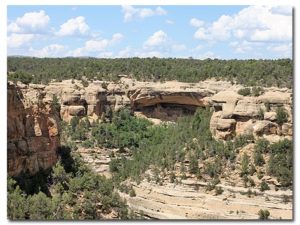
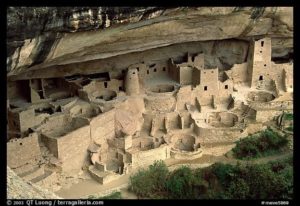
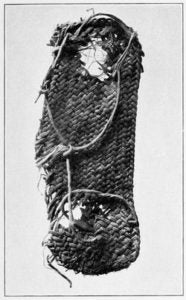
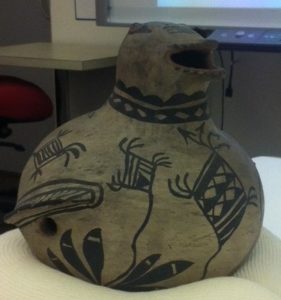
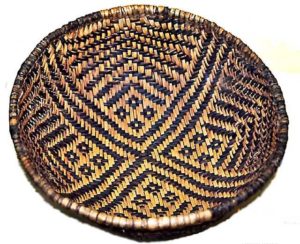
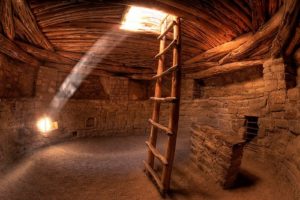
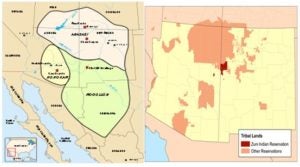
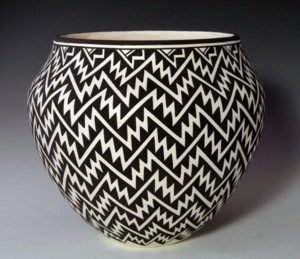
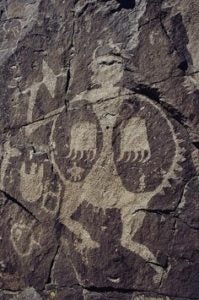
Room Number
Perimeter
Area
The School District of Philadelphia curriculum is aligned to the Pennsylvania Academic Standards for social studies and mathematics. This curriculum unit will include standards from U.S. History along with standards from mathematics, which will focus on the geometry section. Students will focus on the culture, migration, and history of the Ancient Pueblo and Pueblo tribe. History Math